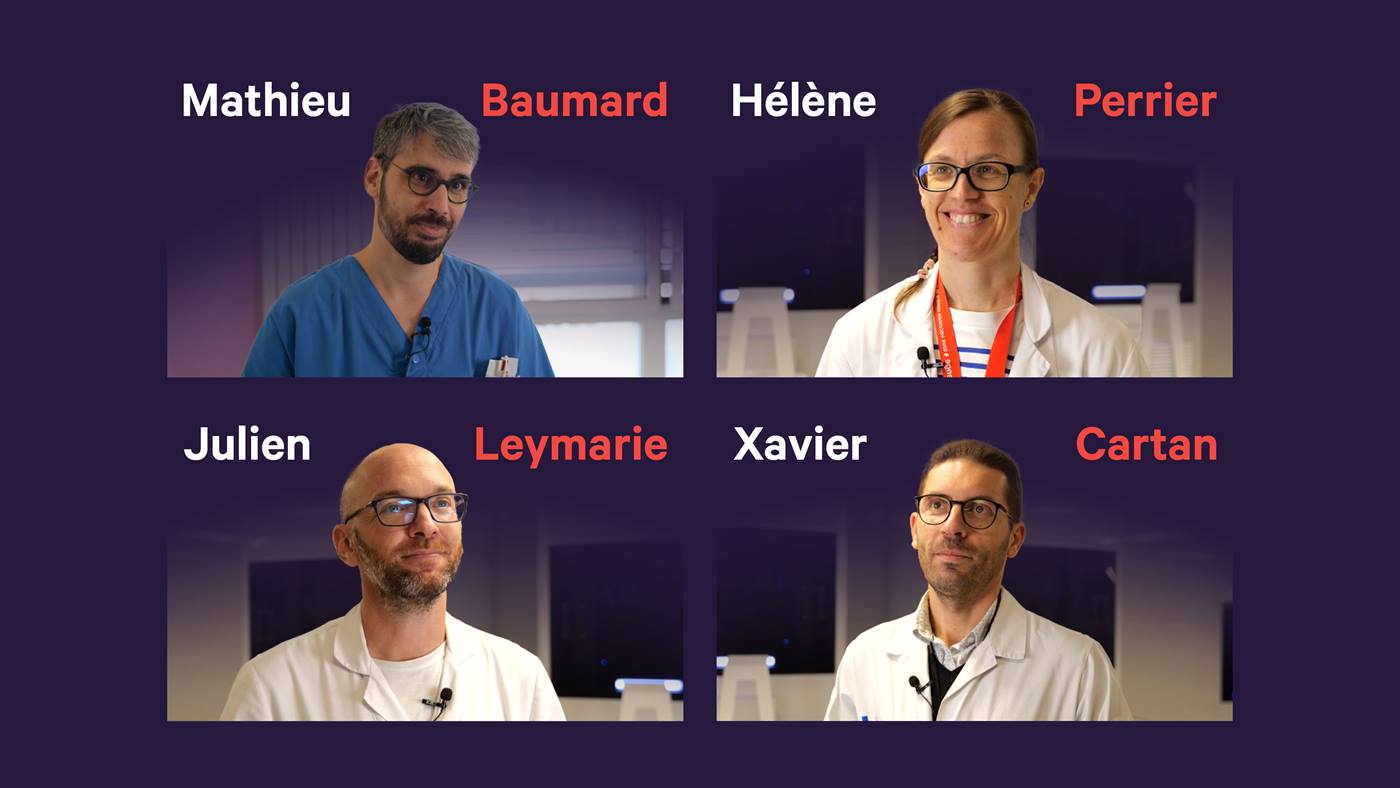Hospitals insights: How unit doses support the Centre Hospitalier Le Mans

We met four team members of Centre Hospitalier Le Mans (CHM) who work with the unit dose system TheraPick every day. Hélène Perrier (Pole leader of Pharmacy), Xavier Cartan (Pharmacist), Julien Leymarie (Pharmacy operator) and Mathieu Baumard (Nurse) were keen to tell us about their experience with the system and how they benefit from it.
Mr. Cartan, your hospital decided to automate parts of the medication management process, first and foremost, the patient-specific therapy dispensing. What were your requirements for this approach?
Xavier Cartan: The main elements to guide the choice of automation were the identification of the dose up to the patient’s bed, preserving the integrity of the industrial blister pack, and the traceability of batch numbers and expiry dates. This naturally led us to choose a solution with an automatic dose packaging machine.
You have chosen our TheraPick to realize your project. What are the benefits of this system in terms of creating unit doses and the rings, that contain patient-specific therapies?
Hélène Perrier: TheraPick and the unit doses enable complete identification during the whole drug management process, up to the last step: the patient's bed. It’s also possible to reintegrate doses that have not been used and thus to achieve significant financial savings for the institution.
Mathieu Baumard: Furthermore, for us nurses, using the rings means that we receive medicines directly from the pharmacy. The patient-specific therapies are prepared with name and administration times. And so, our role as nurses is to receive the rings and to dispense them at the right time to the right patient. Thanks to this, we save time on the ward during the preparation process, because before we had to spend nursing time on preparing medications for each patient, several times a week. So, for us, it's much less preparation time and more efficient dispensing time as well.
Mrs. Perrier, did you also notice other improvements in staff utilization?
Hélène Perrier: In particular, the use of the system has allowed each profession to refocus on its core tasks, i.e., the nurses have been freed from the time-consuming preparation of drugs, since the pharmacy now provides this service. And the pharmacy assistants have also been able to return to their core activities, which is the preparation of medicines. This is a real improvement.
How was the acceptance of the pharmacy team and how do you feel about the new way of working?
Hélène Perrier: The pharmacy team was very accepting of this new process. It was all new to us. You must know that we were starting from scratch. It's an activity that we didn't do at all before, so we had to learn new skills and it was really interesting. This, for example, also includes to learn how to use the machine.
Julien Leymarie: I agree. It’s a new way of working but a very secure way. There were a few small problems at the beginning, but now we established a routine and can solve problems easily.
Xavier Cartan: The time we needed to get used to the machine and to adapt to this new job was a bit long. However, to accompany this change, we have obviously trained all the users and created operating procedures so that they have access to reference documents.
Hélène Perrier: So, today we feel comfortable. We are satisfied with this new process – now it's perfectly integrated into our workflow. We are very happy with it.

Mr. Baumard, as a nurse you are closest to the patients – is the new procedure with the unit dose ring a major change for your patients?
Mathieu Baumard: Well, for the patients, the way they receive their therapy is not changing, because in fact we still give deblistered medicines to them. However, everything that happens before that has changed a lot for us nurses, because there were times that were really allotted for the preparation of the medication. The advantage of the rings is that we receive them daily. Prescription changes can be made daily, available in a therapy ring for 24 hours. For us, this means significantly less preparation time and a more efficient dispensing time.
Would it be possible for you to go back to the old way of working?
Julien Leymarie: For nothing in the world. It's a way of working that is easy, secure and can evolve rapidly. TheraPick is a racing beast. And how we love racing beasts.
Mathieu Baumard: We're very happy with the change that was made.
We would like to thank Hélène Perrier, Xavier Cartan, Julien Leymarie and Mathieu Baumard for their time and valuable insights. Are you also interested in creating experiences like those of Centre Hospitalier Le Mans? Do not hesitate and contact our experts for an initial consultation.











